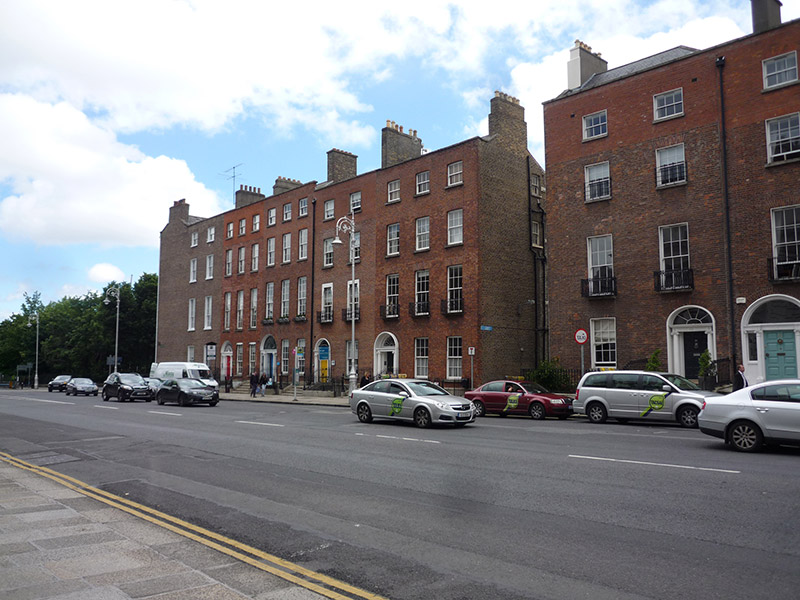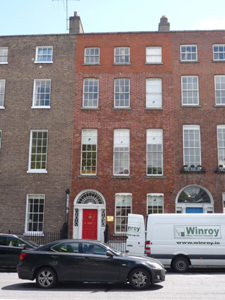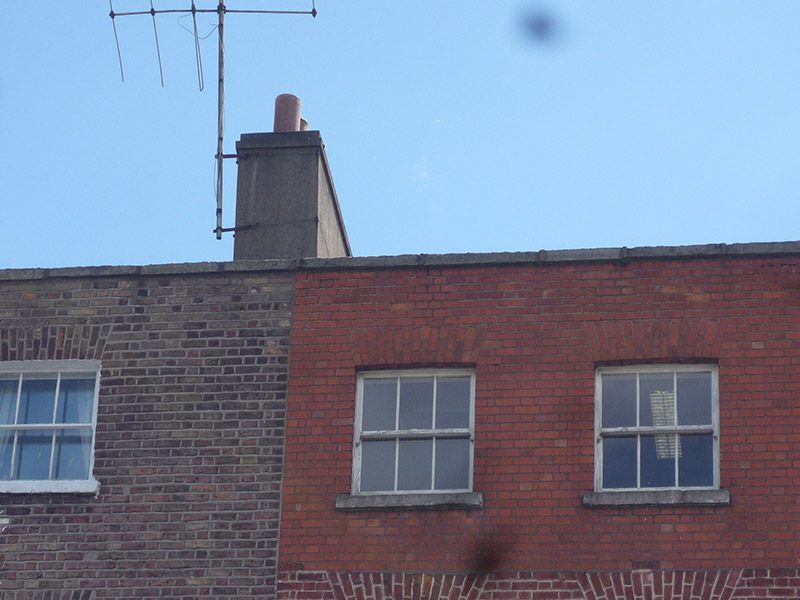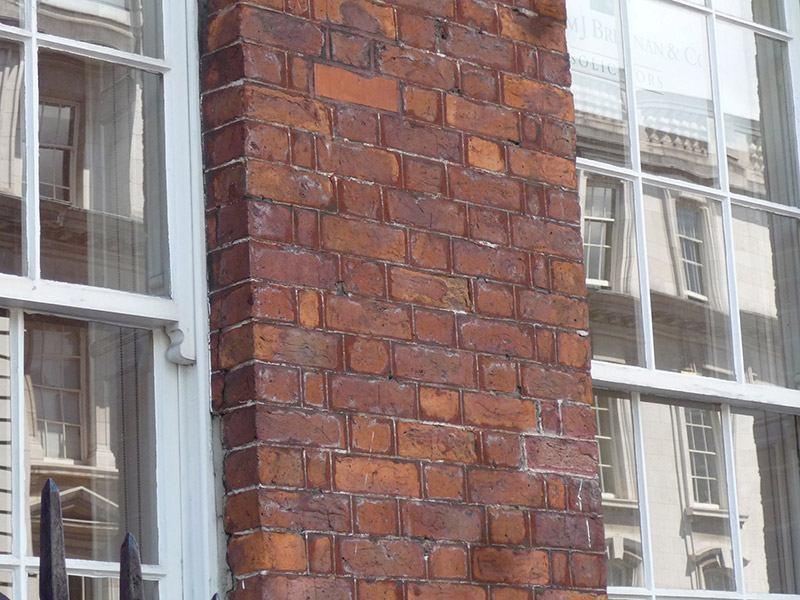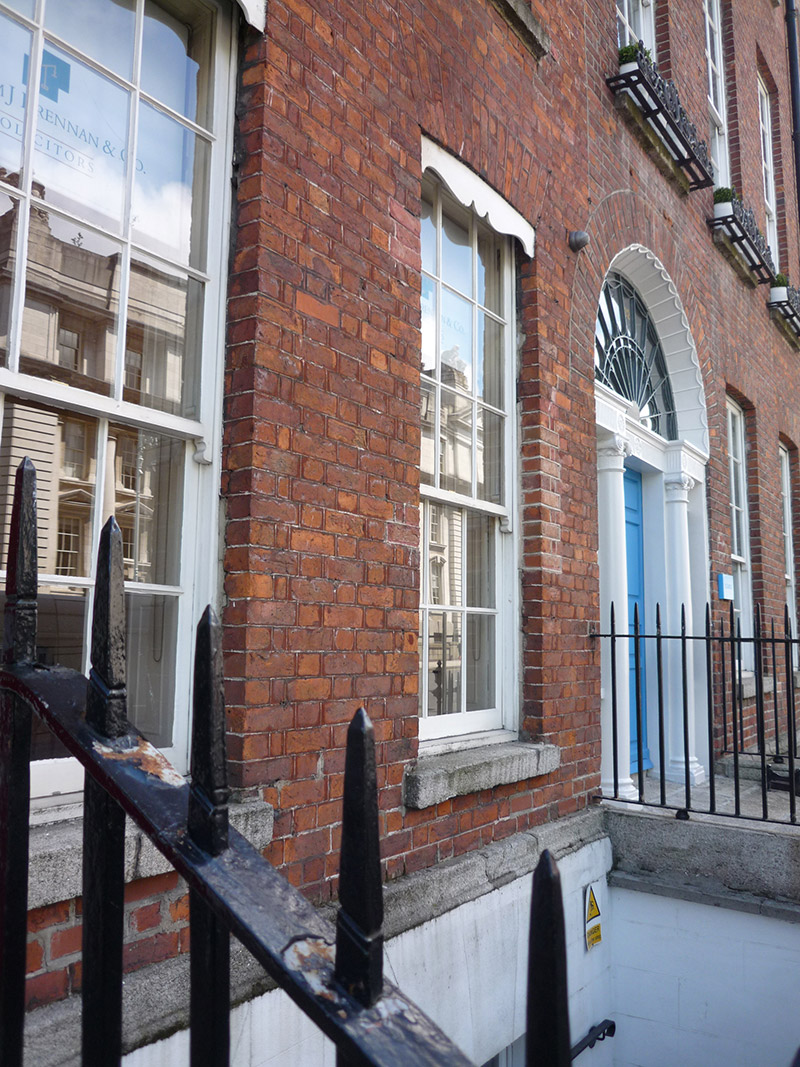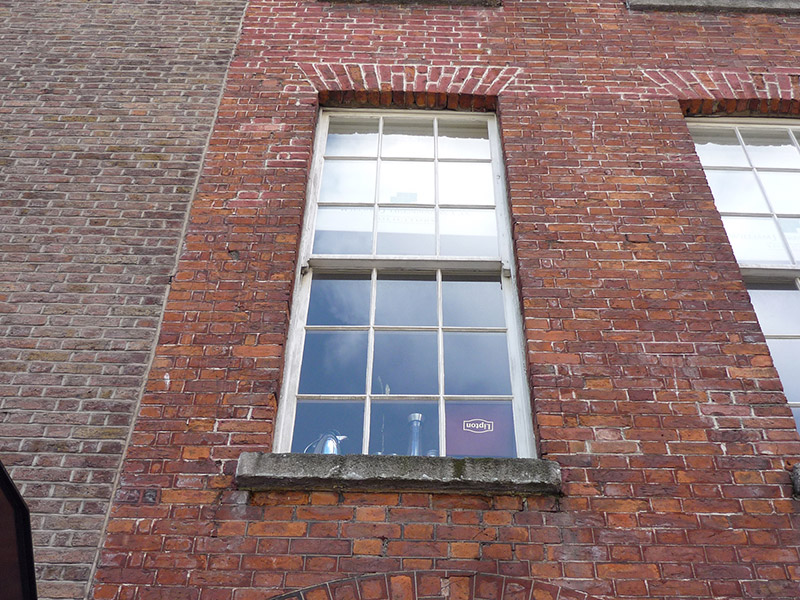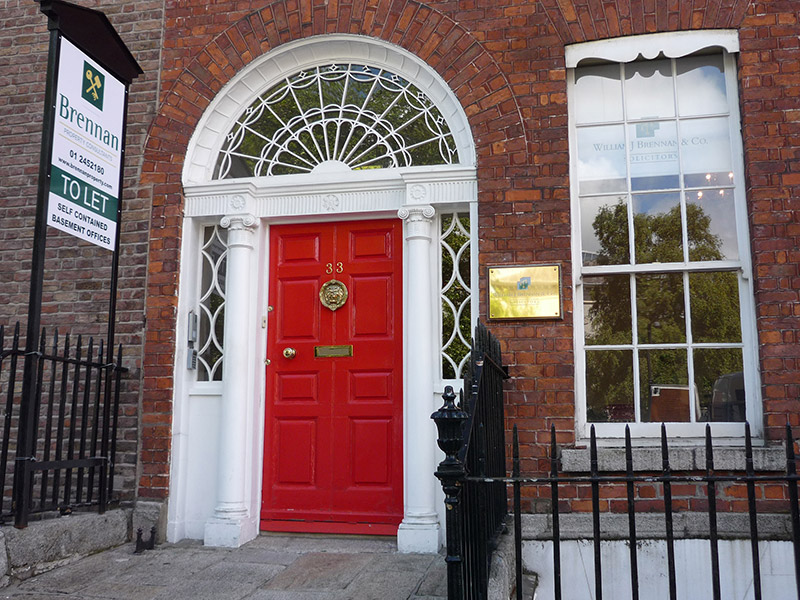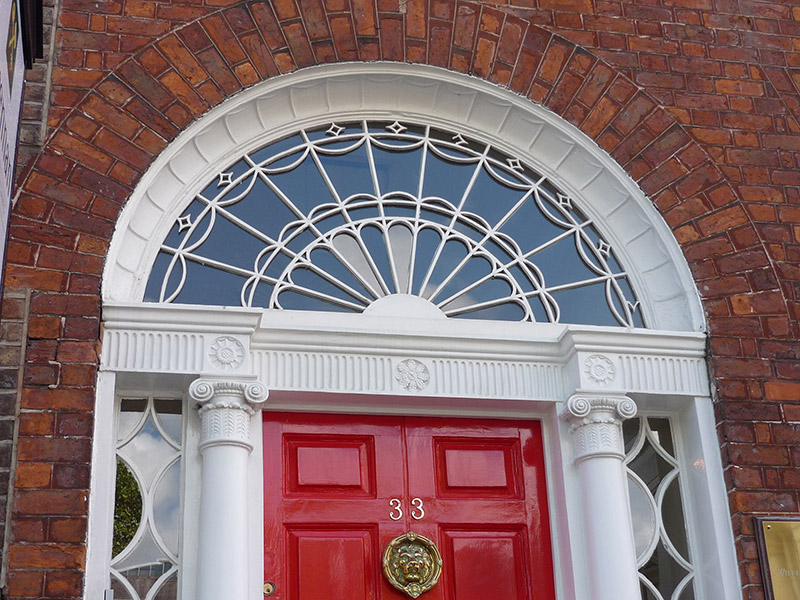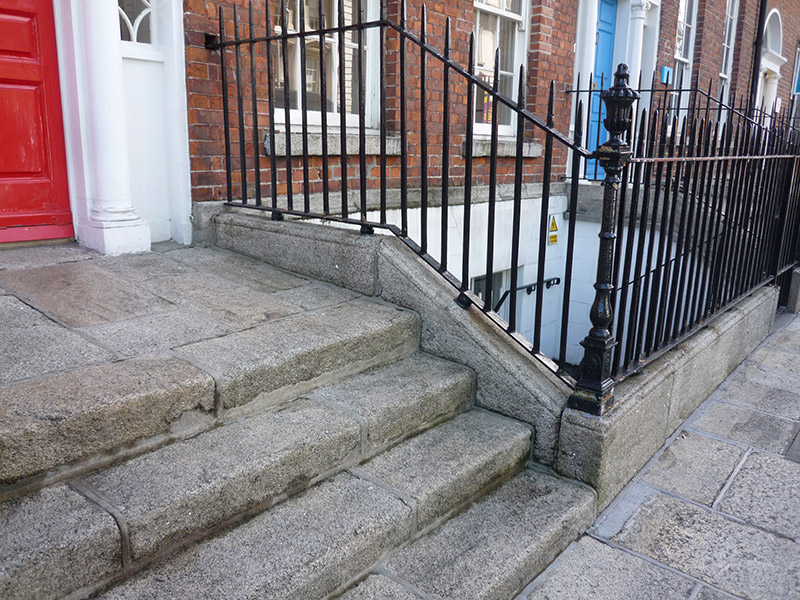Survey Data
Reg No
50100436
Rating
Regional
Categories of Special Interest
Architectural, Artistic
Original Use
House
In Use As
Office
Date
1790 - 1810
Coordinates
316482, 233531
Date Recorded
01/07/2016
Date Updated
--/--/--
Description
Attached three-bay four-storey former house over basement, built c. 1800, with two-storey return to rear of north bay. Now in commercial office use. Pitched slate roof to front, hipped to north end, behind rebuilt red brick parapet with concrete coping, and with two roofs to rear perpendicular to street, larger and pitched over southern bays and hipped over northern bay; return has pyramidal roof. Projecting rendered chimneystack to gabled part of rear roof and rendered chimneystack to party wall with No. 32, with terracotta pots. Concealed rainwater goods. Flemish bond red brick walling to front elevation with recent wigging, walling rebuilt to top floor with cement pointing, on granite plinth over painted ruled-and-lined rendered basement walling. Rendered to rear elevation. Square-headed window openings, diminishing in height to upper floors, with granite sills. Timber sliding sash windows with horns, front elevation having nine-over-six pane to ground floor, nine-over-nine pane to first floor, six-over-six pane to second floor and basement and three-over-three pane to top floor, with curvilinear timber trim to ground floor window heads, and wrought-iron grille to basement. Rear elevation has similar arrangement. Round-headed doorcase with engaged Adamesque Ionic columns, stepped fluted frieze with rosettes, leaded geometric sidelights, elaborate leaded batwing fanlight in scalloped archivolt, and eight-panel timber door with beaded muntin and brass furniture. Granite flagged platform bridging basement with cast-iron boot-scrape and four steps to street. Basement area enclosed by wrought-iron railings with decorative cast-iron posts on moulded granite plinth, with wrought-iron gate to basement and replacement timber glazed and panelled door below entrance platform.
Appraisal
This late eighteenth or early nineteenth-century Georgian house was likely built as a pair with No. 32, partially refaced during the latter half of the twentieth century. There has been minimal loss of historic fabric and detailing and the house retains the well-balanced proportions and graded fenestration pattern typical of the period. It is enriched with a good doorcase and intricately detailed fanlight. The site was offered for sale by William Tighe in 1772, but the house was not built until considerably later, with similar detailing to the houses on the south side of Merrion Square. Nos. 32-33 are unusual in having chimneybreasts on the back wall between the window openings. No. 33 makes an important contribution to the cohesive late Georgian streetscape character of Merrion Street Upper, this stretch having been fairly well retained. The railings also provide visual and craft interest. The building and its intact setting details contribute significantly to the intact appearance of this district of Georgian buildings.
